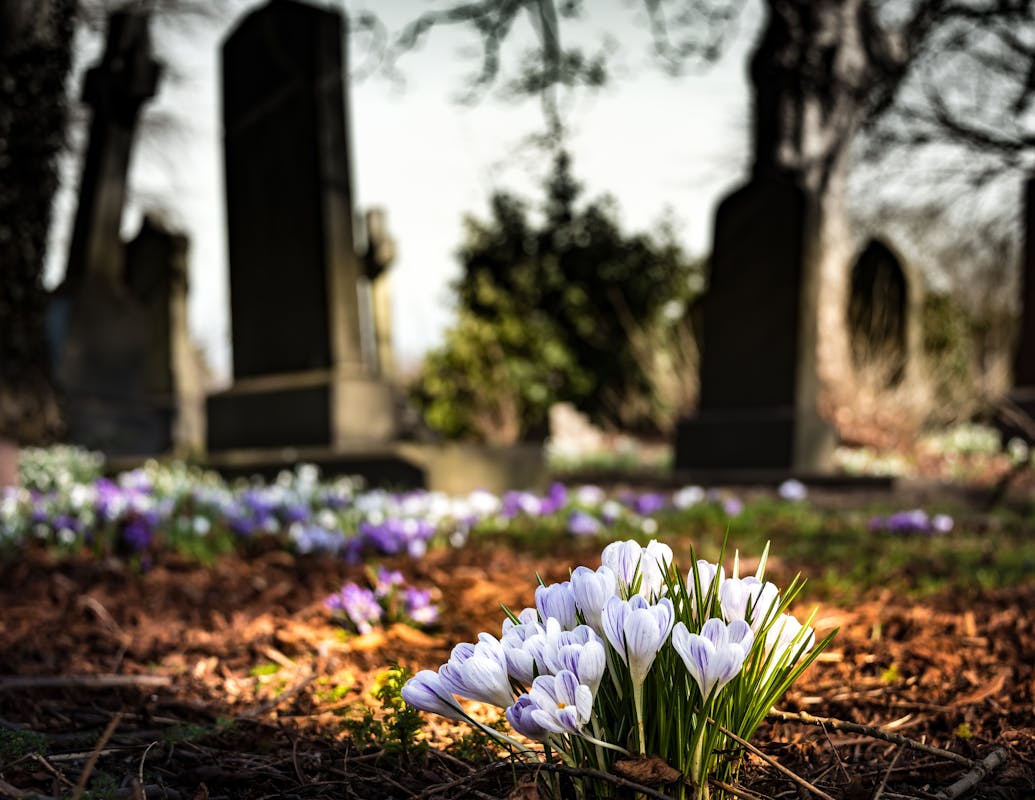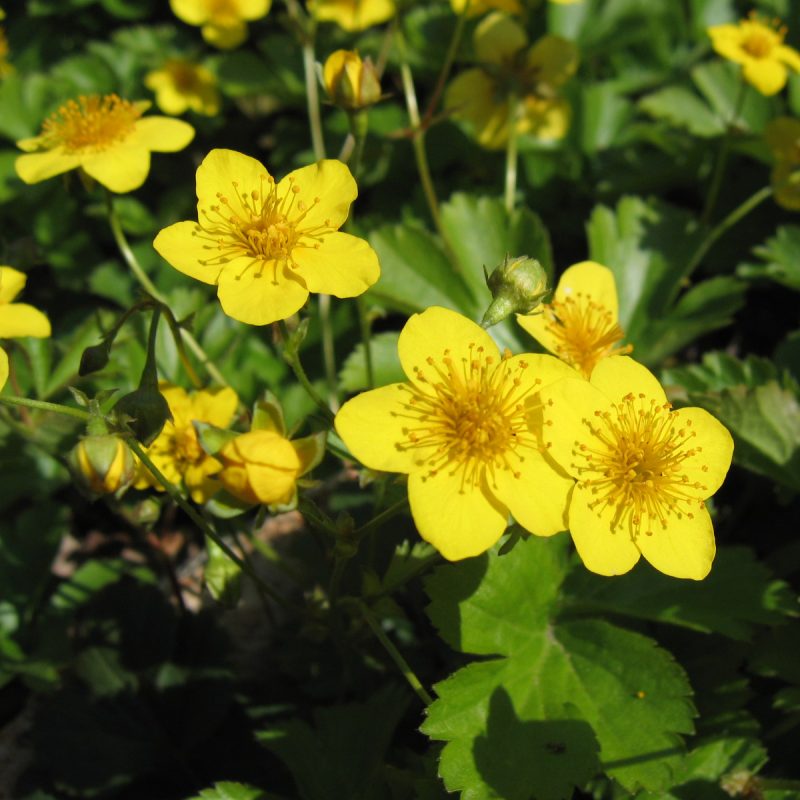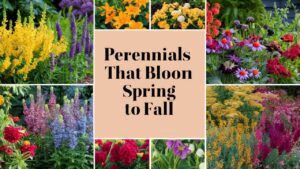During the cold, stark months of winter, the beauty of vibrant flowers can be a poignant way to remember and honor loved ones at their final resting places. While many plants retreat into dormancy during winter, several hardy flowers stand out for their vibrant hues and resilience.
Viola
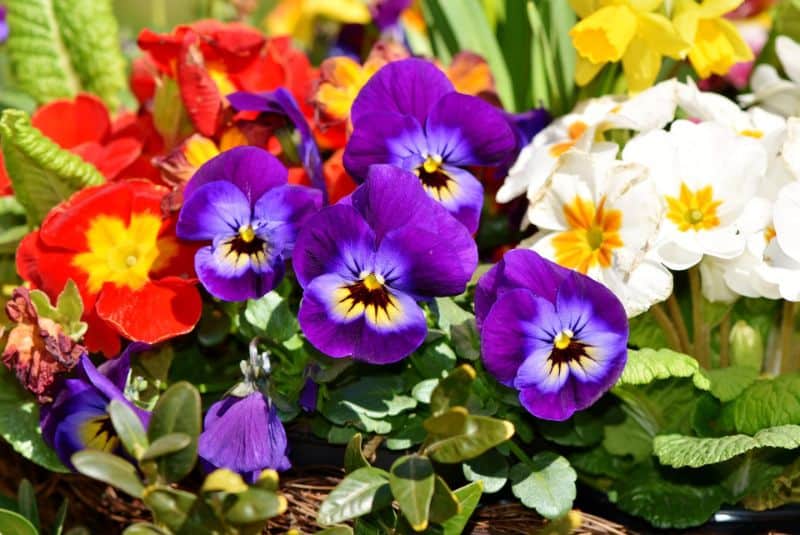
Violas are charming winter flowers that offer a delightful burst of color when most gardens are devoid of petals. Known for their heart-shaped leaves and intricate markings, these flowers typically bloom from late winter into early spring, making them ideal for cemetery plots. Their small size—often no taller than six to eight inches—allows them to complement gravestones without overpowering them.
What sets violas apart is their resilience. They thrive in cooler temperatures and can withstand light frost, allowing them to persist even in adverse weather. Beyond their aesthetic appeal, violas symbolize love and remembrance, carrying a gentle message of affection toward those who have passed. Planting violas in a grave can create a serene space for visitors, inviting reflection and connection. Their low maintenance requirements make them an excellent choice for those who wish to honor their loved ones without extensive upkeep.
Helleborus
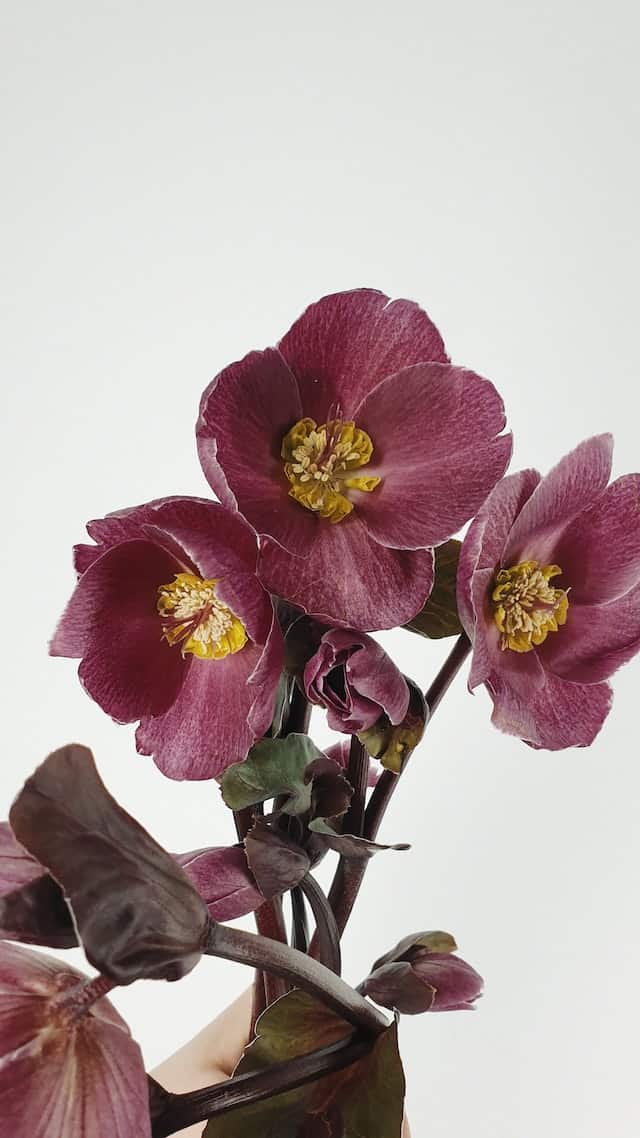
Helleborus, commonly known as Lenten rose or Christmas rose, is a remarkable perennial flower that can bring life to cemetery graves during the winter months. This plant blooms in late winter, often providing one of the earliest displays of flowers just as the landscape begins to awaken from its snowy slumber. The blooms, which range in color from pure white to deep purple, are often shaped like delicate cups, lending an air of elegance to any setting.
Moreover, hellebores are exceptionally hardy. With their ability to thrive in partial or full shade and tolerate harsh winter conditions, they are a perfect choice for cemetery gardens, often blooming just as spring approaches. Symbolically, hellebores are associated with serenity and tranquility, making them a fitting tribute at a final resting place. Additionally, their evergreen foliage adds year-round interest, ensuring that the grave remains a peaceful and inviting space, even when the flowers are not in bloom.
Hyacinths

Hyacinths, while often associated with spring, can be prepared for earlier blooms during the winter months through bulb forcing techniques. These fragrant flowers are known for their lush clusters and rich colors, making them a striking addition to a cemetery grave. When forced to bloom indoors before being transplanted outdoors, hyacinths can bring a vibrant, sweet scent to the chilling winter air, evoking memories and emotions that warm the heart.
Planting hyacinth bulbs in the fall ensures they’ll begin to flourish as winter transitions towards spring. These robust flowers thrive in well-drained soil and can adapt to various conditions, although they prefer sunny spots. The symbolism of hyacinths is rich with meaning, often representing rebirth and constancy—an ideal sentiment for those visiting loved ones. The lush appearance and intoxicating fragrance of hyacinths create a beautiful, aromatic tribute, encouraging remembrance and reflection during life’s more contemplative moments.
Chrysanthemums
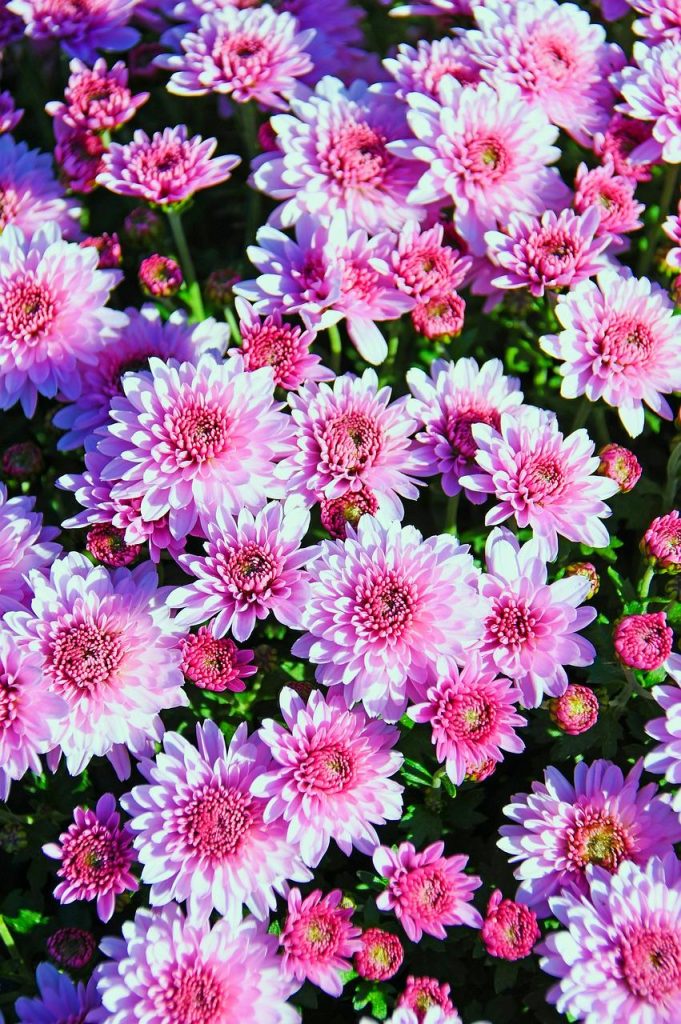
Chrysanthemums, often simply referred to as “mums,” are vibrant flowers that can extend their blooming period into the early winter months, depending on the variety and local climate. Known for their rich array of colors—from deep reds to bright yellows—chrysanthemums symbolize love, loyalty, and devotion, making them particularly fitting for commemorating loved ones in a cemetery setting. Unlike many flowers that fade away at the first frost, certain hardy mums can endure the chill and continue to brighten graves.
These flowers thrive in well-drained soil and prefer a sunny location, making them an excellent addition to grave sites that receive adequate sunlight. Chrysanthemums not only provide a splash of color against the winter backdrop but also possess a remarkable ability to last through the season with proper care, including deadheading and ensuring the roots are adequately protected from severe weather. Their cheery disposition can create an inviting atmosphere, allowing visitors to linger in memory of those who have passed.
Heath

Heath, belonging to the Ericaceae family, is a resilient evergreen that blooms with small, bell-shaped flowers throughout the winter months. Their delicate blooms can range in color from soft pinks and whites to vibrant purples, adding a subtle yet lively touch to cemetery graves. Heath is particularly beloved for its ability to flourish in poor, sandy soils, often where other flowers might struggle, making it a low-maintenance yet impactful choice for memorial sites.
Symbolically, heath represents protection and hope, which can carry profound meaning for those seeking solace while remembering their loved ones. The robustness of heath against the harsh winter elements symbolizes strength and resilience, serving as a metaphor for the enduring nature of love and memory. With its year-round green foliage, heath creates a lush setting that provides comfort even as the flowers come and go, ensuring that the grave remains visually appealing throughout the winter.
Autumn Anemone
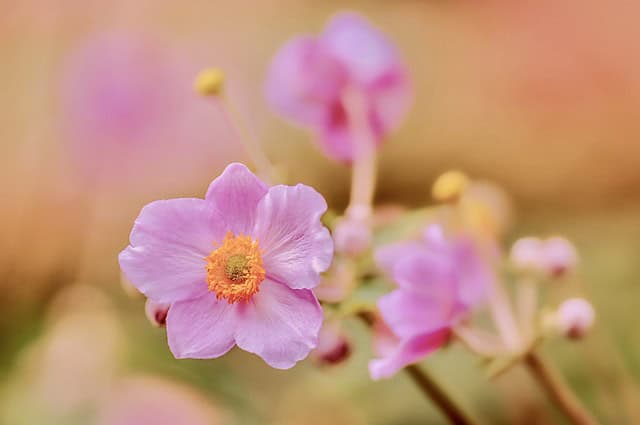
Autumn anemones, particularly Anemone hupehensis, also known as Japanese anemones, are stunning perennials that bloom from late summer into the fall and can sometimes persist into early winter. Their graceful, wind-swept petals, typically in shades of white and pink, lend an ethereal beauty to any grave. Although they may not bloom in the dead of winter, their lingering presence easily complements fall decorations and preparations for winter, inviting memories of love during the season of reflection.
These flowers thrive in partially shaded areas and can adapt well to different soil types, making them versatile for various cemetery conditions. Spectacular in groups, autumn anemones add movement and softness to the landscape, swaying gently in the winter breeze. Symbolically, anemones represent renewal and protection against adversity, reflecting the hope that endures in remembrance. Planting these elegant flowers at a grave can inspire a sense of peace and continuity, allowing visitors to feel connected to their loved ones long after they have gone.
Vinca Minor
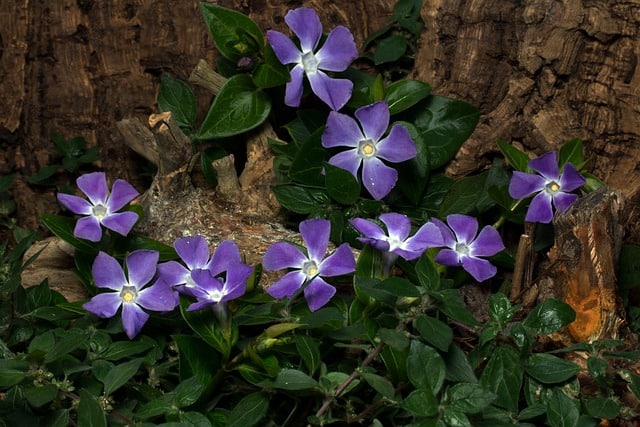
Vinca minor, commonly known as lesser periwinkle, is a perennial ground cover that thrives even in the most challenging winter conditions. Its glossy green leaves remain vibrant throughout the cold months, providing a lush backdrop for any flowers that bloom alongside it. The enchanting blue or violet flowers that emerge as early as late winter or early spring stand out against the rich foliage, offering a cheerful reminder of life’s persistence amid the starkness of winter.
Symbolically, vinca minor represents remembrance and is often associated with fidelity, making it an apt choice for honoring cherished departed loved ones. Its ability to spread and form a dense carpet of color makes it ideal for marking graves or enhancing memorial gardens. This low-maintenance plant can withstand shade and drought, reducing the need for constant upkeep while maintaining a dignified appearance. Planting vinca minor around a grave provides not only beauty and resilience but also a sense of continuity through changing seasons.
Marguerite
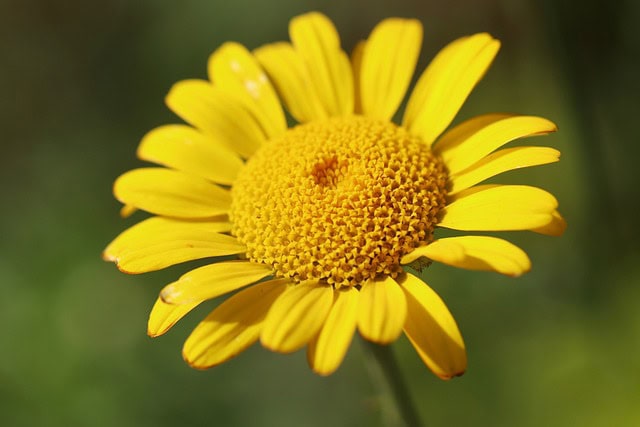
The marguerite, known scientifically as Argyranthemum frutescens, is celebrated for its cheerful, daisy-like flowers, which bloom abundantly in various hues, including white, yellow, and pink. While typically regarded as a summer flower, in milder climates, marguerites can exhibit considerable resilience and continue to present charming blossoms even into the early winter months. This vitality provides an uplifting aspect to cemetery graves, conveying joy and hope.
Marguerites symbolize innocence and purity, adding a heartfelt dimension to the act of remembrance. Their cheerful vertical growth makes them striking focal points in any cemetery arrangement. Additionally, marginal daisies are relatively easy to care for, requiring well-drained soil and sunlight to flourish. Their vibrant blooms can resonate with visitors, evoking memories of joyful times spent with those who have passed while simultaneously brightening the otherwise dreary winter landscape.
Primrose

Primrose (Primula spp.) is one of the earliest blooms to emerge as winter yields to spring, captivating those who seek flowers at cemetery graves. While primroses typically thrive in temperate climates, their cheerful pastel colors—from soft yellows to vibrant pinks—can add warmth and life to memorial sites during the colder months. These resilient flowers can bloom as early as late winter, providing a hopeful herald of the spring season.
Beyond their beauty, primroses carry significant symbolism; they are often associated with new beginnings, resilience, and everlasting love. This makes them particularly meaningful for commemorating loved ones, as they remind all of the continuing presence of life and memories that linger long after someone has departed. Primroses prefer shaded or partially shaded areas and thrive in moist, well-drained soil, making them suitable for many cemetery conditions. Their early blooms can bring joy and comfort to visitors, reinforcing the bond between the living and those who have passed.
Daffodils
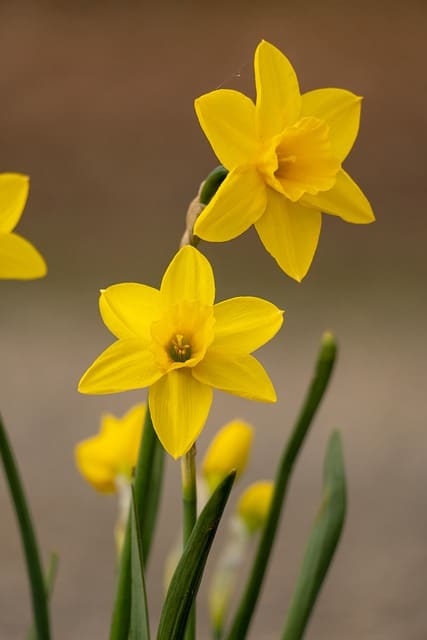
Daffodils, known for their striking trumpet-shaped blooms and bright yellow or white petals, are among the first flowers to herald the arrival of spring. While typically associated with the warmer months, daffodils can be planted in the fall to ensure they bloom earlier in the spring, providing a beautiful and joyful appearance that honors lost loved ones. These perennials are particularly well-suited for cemetery graves because they are hardy and can thrive in various conditions, including poor soil.
Beyond their visual appeal, daffodils hold a wealth of symbolic meaning. They represent rebirth, renewal, and new beginnings—ideal sentiments for those remembering loved ones. The act of planting daffodils can signify hope and the return of life, serving as a beautiful reminder that while someone may be gone, their memory and the love shared endure. Additionally, these flowers are relatively low-maintenance, requiring minimal care once established, which makes them a practical choice for cemetery settings.
Tulip

Tulips are beloved for their exquisite grace and wide range of colors, making them a favored choice for creating beauty at cemetery graves. In many regions, tulips bloom in early spring, often just after the last snows have melted, adding vibrant splashes of color to a landscape that might otherwise be drab and lifeless during the winter months. The rich colors—ranging from soft pastels to vivid hues—can evoke a variety of emotions, capturing the essence of spring that brings renewal and hope.
Each color of tulip also carries its own meaning, from red tulips symbolizing true love to white tulips representing forgiveness and peace. This symbolism makes tulips especially meaningful for conveying messages of affection and respect toward those who have passed. When planted as bulbs in the autumn, they can create a stunning display in the spring, inviting visitors back to the grave site to reflect on memories and connections. With their hardy nature and adaptability, tulips are a wonderful option for anyone looking to adorn a grave with flowers that inspire joy and remembrance.
Waldsteinia
Waldsteinia, commonly known as barren strawberry, offers a unique option for those seeking winter flowers for cemetery graves. This low-growing perennial resembles a small ground cover and produces delicate yellow flowers that bloom in early spring. Its bright greenery remains vibrant throughout winter, providing visual interest even before the flowers appear. The foliage forms a dense mat that can enhance the aesthetics of a grave without overwhelming other memorial flowers.
Symbolically, waldsteinia represents endurance and resilience, qualities that resonate with the themes of memory and ongoing love for those who have passed. As a tough plant, it thrives in various conditions and can tolerate shade, making it ideal for cemetery plots that may not receive abundant sunlight. With its ability to flourish even in challenging environments, waldsteinia becomes a metaphor for the lasting power of love and remembrance, allowing visitors to connect more deeply with the memories they hold dear.


